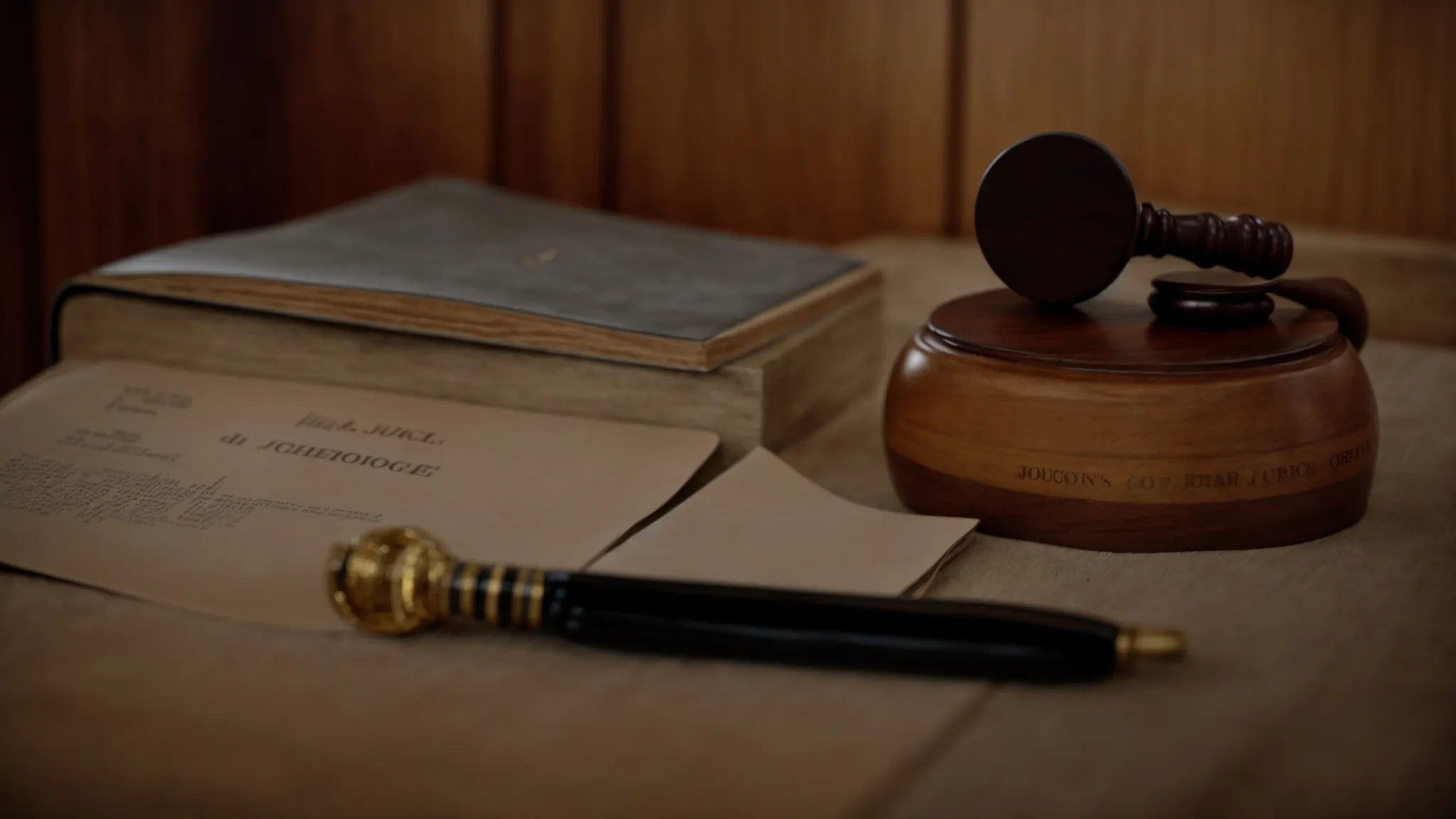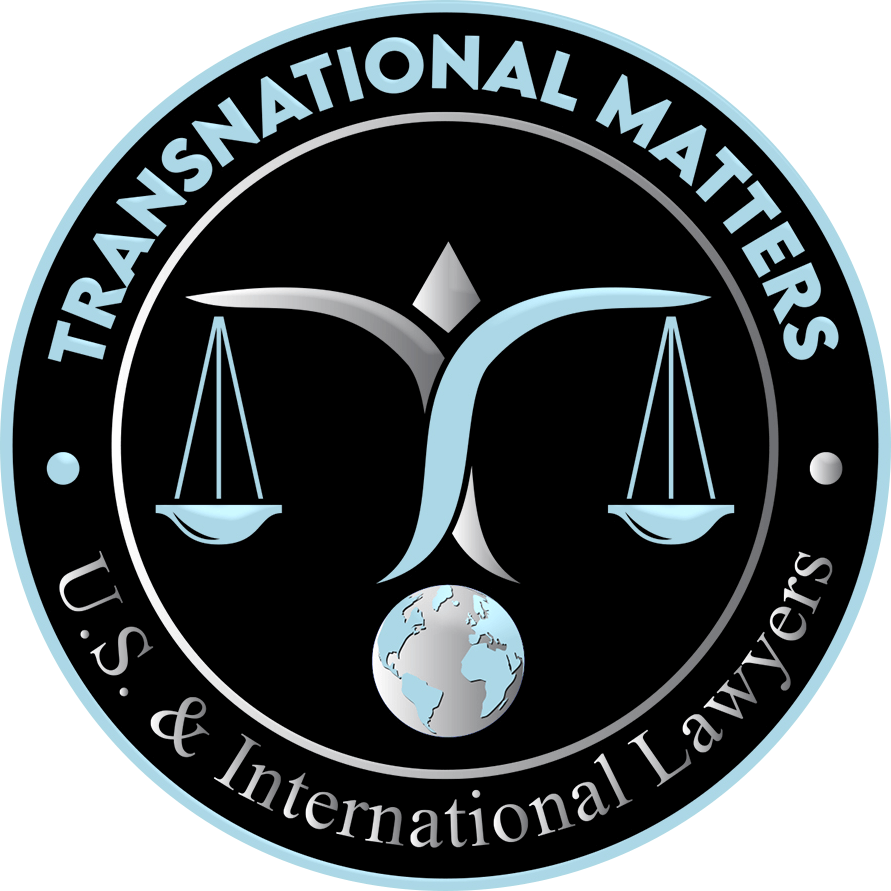Understanding the 3(a)10 Settlement Process in Securities
A 3(a)(10) Settlement plays a pivotal role for issuers seeking a pathway to convert debt into equity without registering the transaction with the SEC.
At the intersection of legal compliance and strategic financial planning, understanding the mechanics of 3(a)10 settlements is crucial for corporations desiring to optimize capital structure while sidestepping dilution pitfalls. The Securities and Exchange Commission plays a vital role in overseeing the securities markets and ensuring individuals and agencies comply with the Securities Act of 1933 and other relevant regulations. The agency plays a crucial role in maintaining the integrity of the bond market and providing guidance on equity securities.
Steeped in legal stipulations, the process involves critical steps such as obtaining court approval through fairness hearings — a safeguard ensuring the interests of debt holders align with common shareholders and are in compliance with the Securities and Exchange Commission.
Unveiling the criteria and strategic benefits of 3(a)10 can empower issuers with the knowledge to make informed decisions.
Keep reading to demystify the complexities of 3(a)10 settlements and leverage their potential for your company’s benefit.
Key Takeaways
- A 3(a)10 Settlement Allows Companies to Address Legal Claims by Issuing Equity Instead of Expending Cash Resources
- Court-Approved Fairness Hearings Ensure the Equitable Treatment of All Parties During a 3(a)10 Settlement
- Timing Plays a Critical Role in the Execution and Success of 3(a)10 Settlements Amidst Financial Restructuring
- Selecting the Right Securities for a 3(a)10 Settlement Requires a Deep Understanding of Compliance and Exemption Criteria
- Documentation, Transparency, and Fulfillment of Ongoing Reporting Responsibilities Are Essential for Regulatory Compliance in 3(a)10 Settlements
Exploring the Basics of 3(a)10 Settlements

Navigating the terrain of securities regulation, one might encounter the lesser-known but significant provision of a 3(a)10 settlement.
This mechanism, entrenched in securities law, serves as a pivotal avenue for companies seeking to resolve outstanding debt obligations through the issuance of equity.
The decision to enact a 3(a)10 settlement is typically driven by a company’s strategic need to streamline its financial health without burdening cash reserves.
These securities offerings, crafted under a specific legal framework, offer an alternative to conventional capital-raising methods, underscoring their utility for entities in various stages of growth and financial recuperation.
Defining a 3(a)10 Settlement in Securities Law
Within the domain of securities law, a 3(a)10 settlement refers to a legal provision that allows a publicly traded company to settle class action lawsuits or other litigation issues by issuing stock to claimants. It is rooted in the exemptions found in the Securities Act of 1933, where Section 3(a)10 provides a safe harbor for companies to issue shares without the need for registration, assuming certain conditions are met. Securities and Exchange Commission is the regulatory agency responsible for overseeing securities markets and individuals involved in securities transactions.
The intricacies of a corporation 3(a)10 settlement pivot around court approval, mandating a fairness hearing to ensure that the shares are being issued in a manner equitable to all parties involved. Notably, this process aligns the company’s interests with its claimants, allowing the company to address its liabilities while preserving capital and providing claimants with potential for future value growth.
Key Reasons Companies Opt for 3(a)10 Settlements
Companies gravitate toward 3(a)10 settlements as a strategic maneuver to preserve liquidity. Engaging in such settlements enables organizations to address their financial liabilities by issuing shares rather than depleting cash resources, which is crucial for maintaining operational stability and investing in growth opportunities.
The allure of these arrangements often lies in their capacity to circumvent the lengthy and expensive process of registration with the Securities and Exchange Commission (SEC):
- 3(a)10 settlements eliminate the complexities and administrative overhead associated with registering securities, thereby reducing the time and financial impact on the company.
- They immediately resolve outstanding legal claims, which can enhance a company’s public image and investor confidence by demonstrating proactive financial management.
- Issuing shares to claimants not only settles disputes but also can potentially expand a company’s shareholder base, increasing market interest and liquidity.
Having uncovered the groundwork of 3(a)10 settlements, the narrative pivots to the critical juncture where legality meets practice. Enter the realm of fairness hearings, the gatekeepers of equity and watchtowers of due process within these financial settlements. Institutions, corporations, individuals, brokers, boards, and securities markets are involved in these processes.
The Role of Fairness Hearings in the Process

Central to implementing a 3(a)10 settlement is the fairness hearing, a judiciary safeguard designed to validate the equity of the proposed stock issuance.
Stakeholders look to this procedural step as a keystone in legitimizing the transaction, where the court scrutinizes the terms to protect the interests of the claimants.
The significance of such hearings lies not only in their legal necessity but also in their role as a linchpin of transparency and trust in resolving securities disputes.
An elucidation of the specific functions and stages inherent in a fairness hearing unravels its importance as an equitable checkpoint in the 3(a)10 settlement process.
Understanding the Purpose of a Fairness Hearing
The purpose of a fairness hearing reaches far beyond mere procedural formality; it is the critical juncture where the court assesses the equity of a securities offering proposal. At this hearing, the interests of both the company and its claimants are balanced against the value of the shares being offered as compensation.
During a fairness hearing, the judge meticulously evaluates the terms of the stock issuance, ensuring they meet the established threshold of fairness and do not unfairly dilute the value of existing shares. This juncture solidifies the court’s role in safeguarding the rights of all involved parties before finalizing the securities offering:
| Stage | Action | Purpose |
|---|---|---|
| Assessment | Judge reviews settlement terms | Ensure equitable share valuation |
| Review | Equity of issuance scrutinized | Protect against share dilution |
| Finalization | Court approval granted | Transaction legitimacy affirmed |
Steps Involved in Conducting a Fairness Hearing
Initiating a fairness hearing, the presiding judge commences with a thorough examination of the settlement details, ensuring the share issuance upholds the tenets of equity and reasonableness outlined by the court. Interested parties present insights and objections, which the court meticulously considers, weighing their validity against the proposed settlement terms. The Securities and Exchange Commission is responsible for overseeing the area to ensure compliance with the Investment Advisors Act and other regulations.
- Notification to interested parties or claimants about the hearing and terms of the settlement.
- Evaluation of the fairness of the terms by the court, considering expert testimonies and evidence.
- Opportunity for claimants to raise concerns or support the arrangement before the court.
- Determination by the judge on whether the proposed settlement is fair and reasonable to all involved parties.
- Issuance of a court order to finalize the settlement, conditional upon the satisfaction of any adjustments or stipulations.
Consequently, the judge delivers a verdict, endorsing the transaction if the evidence confirms the settlement aligns with the principles of fairness. This outcome paves the way for the final settlement between the company and claimants, consummating the terms as mandated by the court’s decision.
Shifting gears from judicial oversight, the spotlight now falls on securities exemption. The rules governing 3(a)10 exclusions beckon with their own complexities and merits.
RULE 144 EXEMPTION WITH A 3(a)(10) SETTLEMENT
Rule 144 Exemption with a 3(a)(10) Settlement is a provision under the U.S. Securities and Exchange Commission (SEC) regulations that allows certain restricted securities to be sold in the public market without having to meet the usual registration requirements. This exemption is primarily utilized for private companies that want to go public or individuals who wish to sell their securities to the public.
Rule 144 provides a safe harbor for the resale of restricted securities, which are securities acquired in unregistered, private transactions. It sets forth various conditions that need to be met in order to qualify for the exemption. One of these conditions is that a specific holding period must be fulfilled, typically six months or one year, depending on the circumstances.
On the other hand, a 3(a)(10) settlement refers to a legal provision that allows a company to issue its securities as consideration for settling a legal dispute or a debt. Under this provision, the company can satisfy its obligations by issuing securities instead of making a cash payment. This settlement method can be particularly advantageous when the company is low on cash or wants to conserve its financial resources.
The combination of Rule 144 with a 3(a)(10) settlement can be powerful, as it enables the selling of restricted securities obtained through a settlement agreement without the need for registration. By utilizing this exemption, private companies can resolve legal disputes or outstanding debts by issuing securities, while the recipients of those securities can subsequently sell them in the public market without having to go through a lengthy and costly registration process. This exemption provides flexibility and efficiency to both companies and individuals in navigating the complexities of the securities market.
LEGAL OPINION TO PROVIDE TO A BROKER AFTER A FAIRNESS HEARING REGARDING THE EXEMPTION
A professional legal opinion is essential in guiding brokers on their obligations and responsibilities following a fairness hearing regarding an exemption. When a broker is granted an exemption from certain legal requirements, it is crucial for them to understand the implications and ensure they comply with any conditions set forth by the court. In such cases, a legal opinion provides valuable insight and guidance.
Following a fairness hearing, a legal opinion should address the specific exemption granted, outlining the applicable terms and conditions. This includes any restrictions, limitations, or ongoing obligations that the broker must fulfill. The opinion helps the broker understand what they are allowed to do under the exemption, as well as any potential risks or pitfalls they should be aware of.
Moreover, the legal opinion provides guidance on the steps brokers should take to comply with the exemption. It lays out the necessary procedures to follow, the required documentation to maintain, and any reporting obligations that may arise. Additionally, it may highlight potential consequences if the broker fails to adhere to these guidelines.
A professional legal opinion is a valuable resource for brokers navigating the complexities of an exemption following a fairness hearing. It offers clarity and guidance and ensures that brokers understand their legal obligations and responsibilities. By seeking trusted legal advice from the Securities and Exchange Commission, brokers can confidently proceed in a knowledgeable and compliant manner.
Criteria for Selecting an Exempt Security Under 3(a)10

The selection of eligible securities for a 3(a)10 settlement necessitates a thorough understanding of the required compliance factors and an evaluation of the securities’ alignment with exemption conditions.
Companies must approach this decision with diligence, as the chosen securities will shape the settlement’s structure and its subsequent impact on both the entities involved and the market at large.
Cleared for exemption under the precise legal contours of 3(a)10, these securities must meet stringent criteria, ensuring they adhere to the exemption’s intent of facilitating fair and equitable dispute resolutions.
Evaluating Securities Eligible for 3(a)10 Exemption
Entities must engage in rigorous analysis when selecting securities for exemption under the 3(a)10 provision. It is critical to ensure that the securities in question comply with exemption regulations, effectively reconciling the interests of resolving legal disputes with protecting investors and maintaining market integrity.
Securities and Exchange Commission guidelines play a vital role in this process, as the agency oversees the securities markets and works to safeguard the interests of individuals.
Moreover, the chosen securities should exhibit qualities that reflect conformity with exemption criteria, verifying their suitability for usage in this nuanced aspect of securities settlement. The evaluation focuses on aligning the securities’ characteristics with the overarching goal of achieving a fair settlement without registration requirements.
Compliance Requirements for Securities Selection
When charting the course for a 3(a)10 settlement, entities must adhere to a stringent set of compliance requirements that dictate the eligibility of securities for this exemption. Scrutiny is directed towards ensuring that the issuance does not infringe upon the established legal benchmarks, which dictate that the securities must be issued in good faith as part of a genuine settlement and not primarily for capital-raising purposes.
The mandated process enveloping 3(a)10 settlements unfurls with a precise examination of securities against the regulatory criteria—confirmation that the issuance aligns seamlessly with the intent of resolving litigation equitably is paramount. Engaging legal counsel specializing in securities law becomes imperative as they unravel regulatory complexities to affirm that the securities qualify under the 3(a)10 exemption.
Now that the key elements for identifying an exempt security have been pinpointed, it’s crucial to recognize the tactical benefits these methods unlock. Let’s explore the dynamic edge afforded by deploying the 3(a)10 strategy in your financial arsenal.
Strategic Advantages of Using the 3(a)10 Method

Embracing the 3(a)10 settlement process offers a host of strategic benefits that resonate profoundly with both companies and investors.
As a nuanced financial strategy, it weaves together a fabric of monetary advantages, redefining the landscape of corporate debt resolution with its heightened focus on preserving cash and fostering investor relations.
At the heart of these settlements lies the crucial element of timing, which stands as a pivotal factor in driving successful outcomes and ensuring the mechanism’s effectiveness within the broader context of financial restructuring and litigation resolution.
Financial Benefits for Companies and Investors
The 3(a)10 settlement method stands as a beacon of financial prudence for companies weathering the storm of litigation-induced financial obligations. By issuing shares in lieu of cash payouts, an organization can preserve its monetary reserves, thereby remaining agile and positioned for investing in key operational endeavors or expansion strategies.
Investors, on their part, benefit from the potential upside in aligning with a company’s strategic recalibration, as shares received through a settlement could appreciate in value over time. Resolving legal challenges through a 3(a)10 settlement demonstrates a management team’s commitment to sustainable financial practices, frequently leading to bolstered market confidence and stability in share prices.
How Timing Influences Successful Outcomes in Settlements
The significance of timing in the fabric of 3(a)10 settlements cannot be overstated, acting as a linchpin that can either propel or hinder a company’s pursuit towards fiscal resurgence. Companies capitalizing on this effective strategy must carefully consider and align their debt resolution milestones with their overall financial planning.
Seizing the right moment for executing a 3(a)10 settlement often necessitates acute market acumen; a keen understanding of prevailing market conditions can markedly enhance the effectiveness of a settlement. By orchestrating the timing of the share issuance with strategic forethought, companies position themselves to optimize the benefits received from the 3a10 transaction:
| Phase | Timing Consideration | Intended Outcome |
|---|---|---|
| Preparation | Market trend analysis | Optimal initiation of settlement process |
| Execution | Alignment with financial calendar | Maximized settlement impact |
| Post-settlement | Monitoring market response | Adaptation to market reactions and investor feedback |
Transitioning from the strategic perks of the 3(a)10 method, attention now turns to the intricate dance with regulatory frameworks. Mastery of these rules ensures a seamless path through the complexities of settlement negotiations.
Navigating Regulatory Compliance During Settlements

Securing seamless navigation through the myriad of regulatory requirements is a foundational aspect of the 3(a)10 settlement process. Entities must engage with due diligence, ensuring that each step adheres to the prescribed legal landscape.
Legal and financial teams collaborate closely to demystify the intricate regulations governing these exemptions: Transparency and meticulous documentation become their mantra throughout the settlement journey.
Each facet of compliance presents an opportunity to fortify the integrity of the settlement and bolster investor confidence:
- Documenting the fairness of the transaction and its adherence to court stipulations.
- Verifying the accurate disclosure of the share issuance to current and prospective stakeholders.
- Ensuring ongoing reporting obligations are met post-settlement, thereby maintaining regulatory goodwill.
Through this convergence of due process, expert insight, and unwavering adherence to regulatory protocols, entities pave the way for a successful and compliant 3(a)10 settlement.
Frequently Asked Questions
What are the fundamentals of 3(a)10 settlements in the securities industry?
At its core, a 3(a)10 settlement in the securities industry allows issuers to exchange outstanding debt or claims for equity, such as stock, without registering the securities with the SEC. This mechanism, codified under the Securities Act of 1933, hinges on a court or authorized governmental entity’s fairness hearing, ensuring that the exchange is equitable for all parties involved.
How does the inclusion of fairness hearings impact the 3(a)10 settlement process?
Fairness hearings inject a vital layer of judicial scrutiny into the Section 3(a)(10) settlement process, ensuring that the exchange of securities for pre-existing debts aligns with shareholder interests and public equity standards. These hearings offer a forum for stakeholders to voice their concerns or support, mandating a transparent evaluation of the settlement’s terms to ascertain their equity and reasonableness before receiving court approval. Securities and Exchange Commission is responsible for overseeing the securities markets and ensuring compliance with the Securities Act of 1933 and Investment Advisers Act.
What criteria are considered when selecting an exempt security under 3(a)(10)?
Selecting an exempt security under Rule 3(a)(10) requires a thorough evaluation of the fairness of the terms to those involved and typically hinges on a court or authorized governmental entity’s approval after assessing whether the arrangement safeguards the interests of security holders. Critical to this determination is the necessity for the hearing to be open to everyone whom the transaction concerns, ensuring transparency and equitable treatment for all parties. The Securities and Exchange Commission plays a crucial role in overseeing the compliance of securities exchanges, investment advisors, and dealers.
What strategic advantages can be gained by utilizing the 3(a)(10) method for settlements?
Adopting the 3(a)(10) Settlement method allows a company to bypass the exhaustive and costly process of registering securities with the SEC, thus offering the opportunity to streamline transactions. Fueling this advantage is the ability to appease creditors by converting debt into equity, thereby fortifying the company’s balance sheet and potentially enhancing market confidence.
How can companies ensure regulatory compliance when navigating the 3(a)(10) settlement process?
Companies must engage in meticulous documentation and partner with seasoned legal counsel to safeguard adherence to regulatory mandates during the 3(a)(10) settlement process. Regular audits and staying abreast of legislative updates are essential steps to ensure ongoing compliance and mitigate legal risks.
Conclusion
Understanding the 3(a)10 settlement process in securities is essential for companies looking to resolve debt obligations effectively while preserving cash reserves.
The 3(a)10 settlement, rooted in the Securities Act of 1933, lets companies issue shares to claimants as part of legal settlements without the burdensome process of SEC registration.
The heart of this process is the fairness hearing, a judicial measure ensuring the equitability of the stock issuance, thereby protecting all parties’ interests and upholding market integrity.
Firms choose 3(a)10 settlements to maintain liquidity and operational stability, benefiting from the strategy’s financial prudence.
Investors can also see value growth in shares received, translating into potential long-term gains.
The timing of settlements plays a crucial role in their success, making market acumen a valuable asset in this context.
Maintaining regulatory compliance is a critical component of the 3(a)10 process, where meticulous documentation and transparency are non-negotiable.
Companies must document fairness, disclose share issuances, and meet reporting obligations to ensure a compliant and effective settlement.
In conclusion, a firm grasp of the 3(a)10 settlement process is a strategic advantage for companies navigating legal disputes in the securities landscape, offering an alternative that aligns legal resolution with financial acumen and regulatory compliance.
At Transnational Matters, we understand the intricacies of a 3(a)10 Settlement and can help guide clients to draft or convert their debt into unrestricted common stocks. Our team of experienced professionals will work closely with you to ensure a smooth and successful transaction. Contact Our Office Today!


